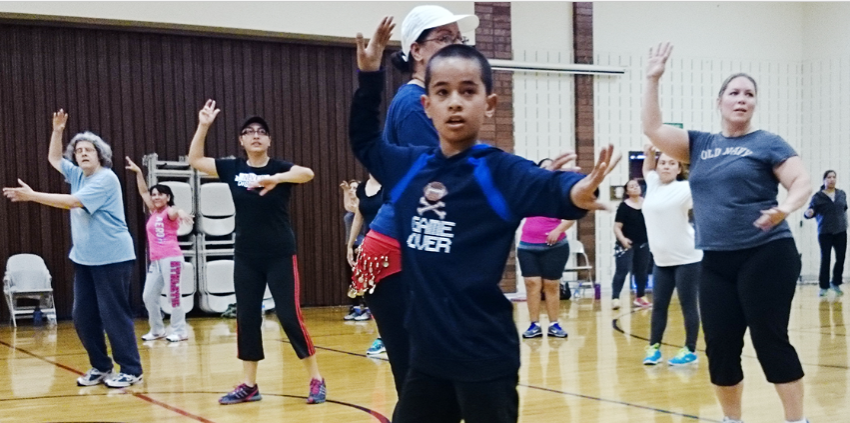
Share On Social!
Schools can serve as so much more than space for children to learn. They can even transform community health.
That is, if schools share their spaces with the public when classes are out.
Fortunately, the team at ChangeLab Solutions is showing how easy and beneficial it is for schools to share use of school grounds with local residents and groups after and before school, and during summer.
What Is Shared Use of Schools?
Playing can help a kid’s healthy brain development.
But many communities are not kid-play-friendly. Latino neighborhoods tend to lack safe places that welcome kids and multi-generational families to play. Many schools lock up their facilities after class ends.
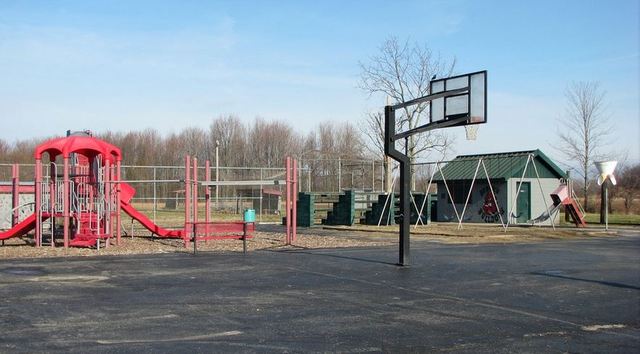 Shared use agreements—also called open use or joint use—are specific plans and rules that allow public and private property owners to broaden access to their underutilized facilities for community use.
Shared use agreements—also called open use or joint use—are specific plans and rules that allow public and private property owners to broaden access to their underutilized facilities for community use.
This can unlock schools to the public when students are not on campus for community activities like:
- Physical activity
- Community gardens
- Continuing education opportunities
- Civic engagement opportunities
- Cultural events
- Cooking and nutrition classes
- Farmers markets
How Does Shared Use Boost Community Health?
Shared use of schools can significantly improve health and equity for those who live nearby:
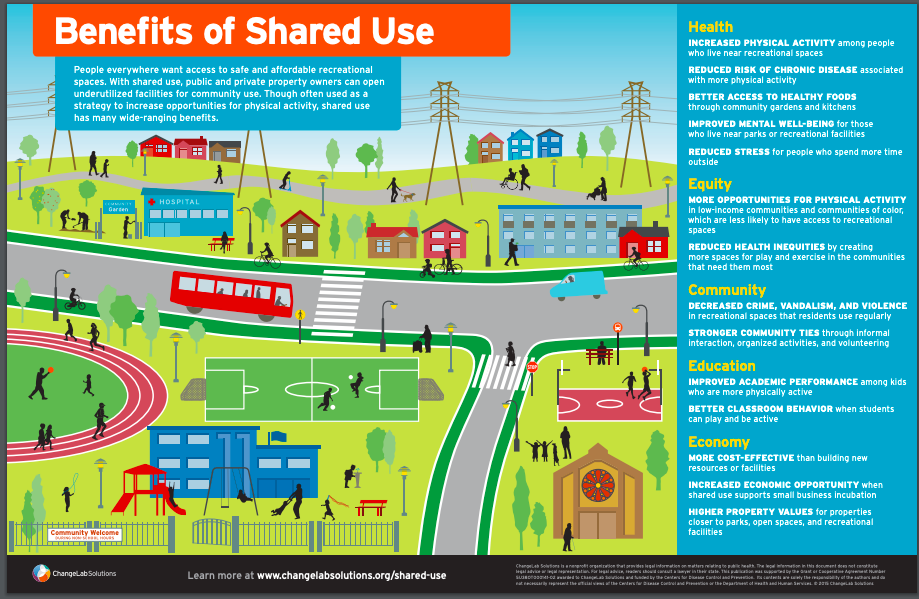 Community: Decreased crime, vandalism, and violence and stronger community ties because of the opportunities for interaction, organized activities, and volunteering.
Community: Decreased crime, vandalism, and violence and stronger community ties because of the opportunities for interaction, organized activities, and volunteering.- Education: Kids who are more physically active improve in their academic performance. When students play they are more likely to behave better in the classroom.
- Economy: Cost-effectiveness, increased economic opportunity, and higher property values for the properties closer to the parks and open areas.
Shared use is particularly beneficial for advancing health equity.
“Shared use can reduce race- and income-based health disparities by increasing access to safe, affordable opportunities for physical activity,” according to ChangeLab Solutions. “Because it utilizes existing facilities, shared use is a particularly potent tool in under-resourced neighborhoods where a lack of funding might prevent development of new recreational spaces.”
How Can Schools Start Sharing?
ChangeLab Solutions created the Shared Use Playbook.
This Playbook is for public health advocates, community leaders, schools, and local government officials who want to learn more about implementing shared use agreements.
“Shared use is particularly useful for cities and towns that want more park spaces,” according to the Playbook. “Shared use agreements are not a substitute for adequate public infrastructure investments, but they can be an important component of larger initiatives to promote healthy living and advance health equity.”
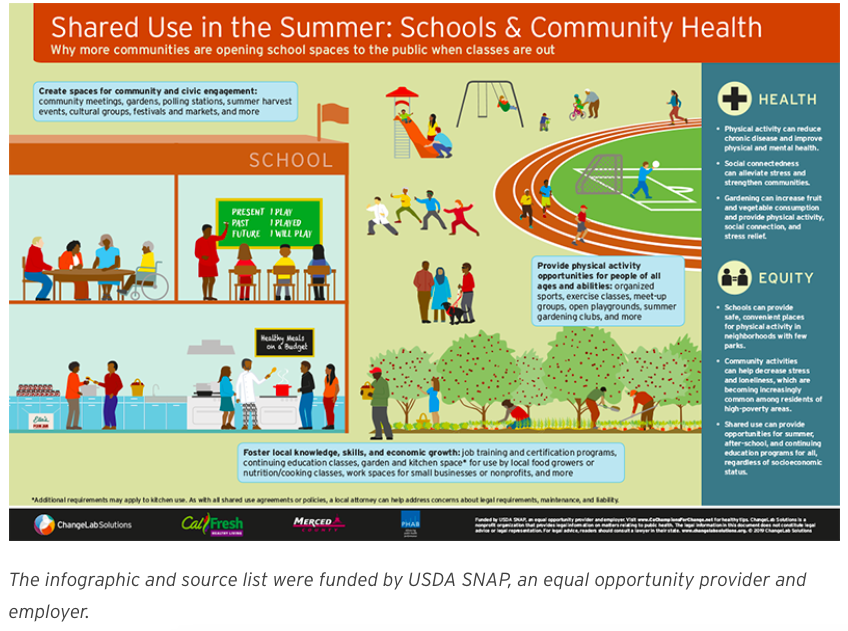 ChangeLab also has a new infographic that promotes use of school grounds during the summer.
ChangeLab also has a new infographic that promotes use of school grounds during the summer.
It highlights how schools can share to encourage civic engagement, physical activity, and even economic growth.
“[Shared use can enable] job training and certification programs, continuing education programs, garden and kitchen space for use by local growers,” and more, according to ChangeLab.
Does Shared Use of Schools Really Work?
Shared use is working across the nation in urban and rural areas.
In Earlimart, Calif., it started with an experiment.
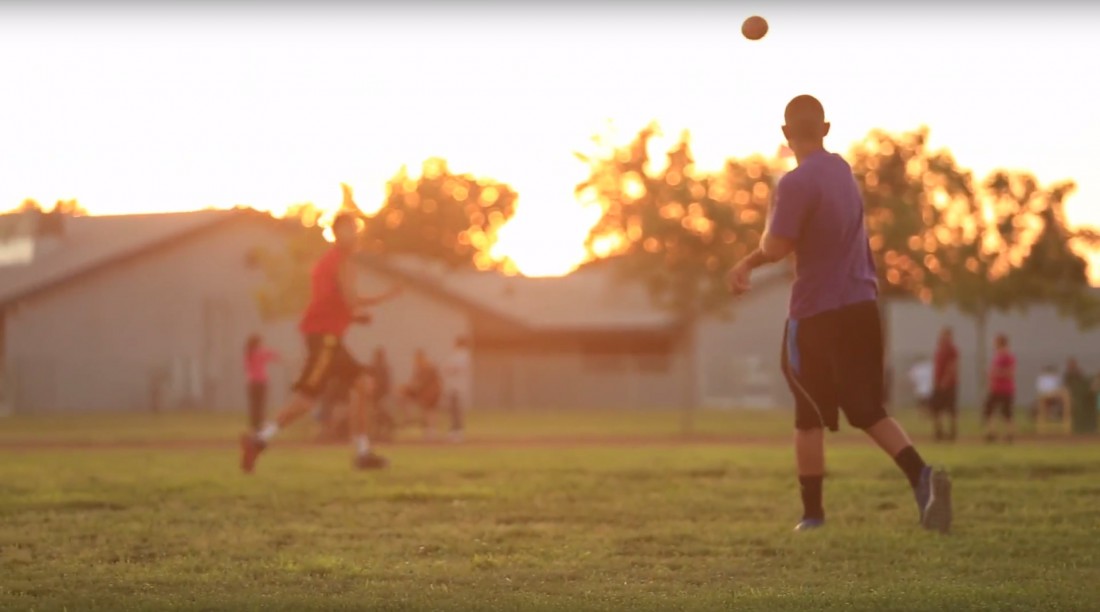
The district superintendent asked the custodial staff at one school leave the school gate open. Word got around that the school’s gate had been left open. Soon the school’s field was filled with local residents.
“This experiment ultimately led to a change in the school district’s policy to allow [public use of] the school yard,” Salud America! reports. “Once residents realized the difference a place to play could make in improving the health of the community, they sought to get a new park, too, and they succeeded.”
Even when shared use opens a school, sometimes parents aren’t aware of the opportunities.
Latino parents, for example, favor of healthy eating and physical activity standards in afterschool programs. But 40% were not aware that several afterschool programs were available, according to a report.
People can step up in these cases, too.
For example, George Block and other advocates in San Antonio pushed for more school districts to enter shared use agreements to allow public use of school yards and playgrounds.
Yet, some of the shared facilities still sat empty after school.
To drive the idea that these school yards are open to the public, Block led an efforts to install literal “open gates” to signify the openness of these recreational facilities.
“Access to safe places to play is a huge problem and it’s too big for any one group or government department to solve by themselves,” Block said.
How Does Shared Use Impact Environmental Justice?
Latinos and low-income people have less access to green space than their white, more affluent peers, according to the Salud America! research review, The State of Latinos and Housing, Transportation, and Green Space.
Green space is one of the foundations for healthy active lifestyles.
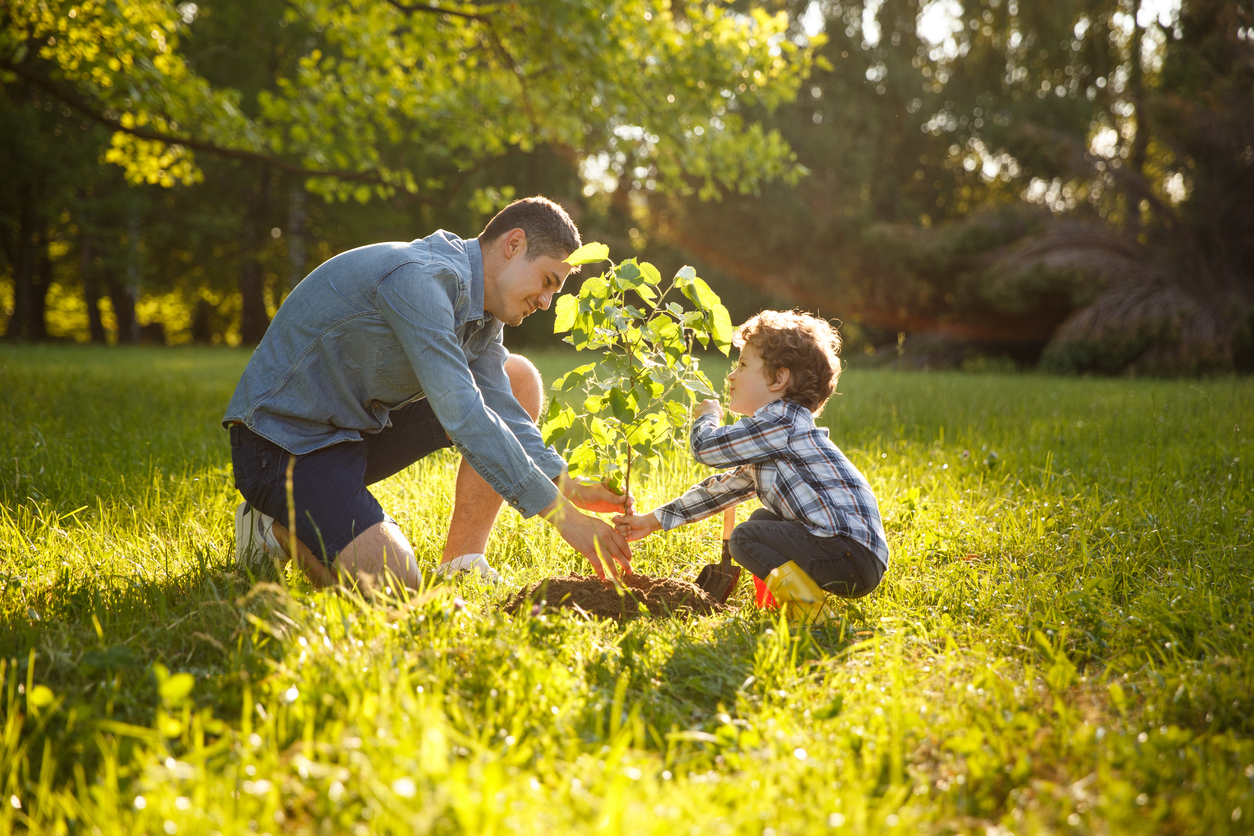 Health equity can be measured according to how well a community creates access to green space, along with other resources.
Health equity can be measured according to how well a community creates access to green space, along with other resources.
Green spaces can be outdoor public space, such as parks, playgrounds, sporting fields, or school yards. They also can be greenways/trails, tree-lined sidewalks, community gardens, nature conservation areas, forests, as well as less conventional urban green alleyways, pocket parks, and green walls or roofs, according to the Salud America! Research Review.
Sharing schools with the public, outside of school hours, means that green space is accessible for neighboring communities even after they graduate from school.
That is big for health because green space can improve people’s mental health.
In a major Dutch study, Van den Berg et al. demonstrated that individuals with more green space near their home (within a 3km radius) were less affected by stressful life events than those with low access to green space, suggesting that greenery can act as a “buffer” to stress, according to Salud America!
So, when there aren’t enough funds to create entirely separate, equitable places for adults and children to access healthy activities, we can use schools when they are not in session.
What Else Can We Do?
If you aren’t sure how you can get involved, here is a way you can start.
With our Salud America! Health Equity Report Card, you can select your county and get customized data on local obesity, food access, physical activity, and health equity issues compared to the state and nation, and comparing Latinos to non-Latinos.
You can then email your Report Card to school, city, and elected leaders.
Get your health equity Report Card!
Explore More:
Healthy Families & SchoolsBy The Numbers
142
Percent
Expected rise in Latino cancer cases in coming years



